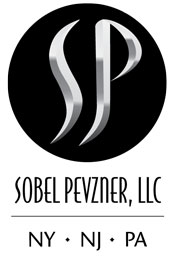New York State Comprehensive Insurance Act and Amendments to CPLR 3101(f) Affect Insurance Disclosure in all Pending and Future Civil Litigation
On December 31, 2021, New York State Governor Hochul signed into law the Comprehensive Insurance Disclosure Act. It is essential to note that this law applies both to actions filed in the future as well as pending actions. Despite the fact that it is potentially onerous in its application, we believe that its adverse impact can be mitigated by a careful reading of the governing statute.
Material Amendments to Policy Disclosures Pursuant to CPLR 3101(f)(2)
Disclosure of Full Insurance Policies
Automatic disclosure – defendants to provide plaintiffs with complete information for any insurance agreement inclusive of primary, excess and umbrella policies through which a judgment could be satisfied within 60 days after serving an answer. We expect the plaintiff’s bar to demand insurance applications under this provision; however, we do not believe that the insurance application in most cases will be deemed “material and
To read this article in its entirety, click here.
Dram Shop Defense – Current Status of Liquor Liability in NY and NJ
A dram of whiskey sounds harmless enough, and in fact it is.
If a typical person consumes a mere dram of whiskey, defined as 1/16 of an oz, it is safe to say that the party who served, be they a commercial establishment or social host, would never be liable for any accident which occurred following its consumption.
In every State, it is illegal to drive with a blood alcohol concentration (BAC) of .08% or more. Even though everyone absorbs and
metabolizes alcohol at different rates, and there are a lot of factors that affect BAC, a person weighing 160 lbs. can consume 6 oz of alcohol (96 drams) while a person weighing 200 lbs could finish off 7.5 oz of alcohol or (120 drams) before reaching a BAC of .08%.
To read this article in its entirety, click here.
WCB Denies Compensability on
Claim of Pulmonary Asbestosis
In a recent Workers’ Compensation decision, Bella I. Pevzner, a partner at Sobel Pevzner, LLC, was successful in securing the
dismissal of claimant’s alleged claim of occupationally induced pulmonary asbestosis. After an extensive trial including witness and expert testimony Law Judge Geoffrey F. Wilk disallowed the claim and same was affirmed on appeal by a Memorandum of Board Panel Decision for lack of medical evidence of a compensable injury.
Claimant, a longtime employee of the New York Power Authority, which was later acquired by Entergy Nuclear Operations, Inc., alleged to have suffered from occupationally induced pulmonary asbestosis, asbestos-related pleural disease, recurrent rhinitis, bronchitis, and
RADS. Claimant’s allegations were based on findings from his treating physician as well as supportive medical evidence. During the course of the trial claimant testified as to his alleged exposure and medical treatment. Additionally, a witness on behalf of the employer, Entergy,
appeared and credibly testified as to the policies, procedures and protective measures taken by the facility to ensure the safety of their employees in absolving them from any potential exposure. The employer’s position was also supported by an expert opinion and testimony wherein the IME physicians found that claimant’s medical treatment as well as testimony revealed showed no signs of causally related asbestos exposure and injury. Thus, this claim boiled down to a battle of the physicians.
To read this article in its entirety, click here.
Successful Appeal – Equine Assumption
of the Risk Doctrine
The Appellate Division of the Second Judicial Department, for the Supreme Court of the State of New York, has overturned a lower court ruling that previously denied defendant’s motion for summary judgment. The injury involved herein occurred when a horse became startled due to a loud noise, which was caused by the breaking of a fence, scaring the horse to the point it bucked its rider off. The plaintiff had been riding horses for approximately three years, and at the time of her injury was taking intermediate riding lessons at the defendant’s facility.
To read this article in its entirety, click here.
School District Not Liable for Spontaneous Act of Student v. Student
It is an everyday occurrence—to one extent or another—that children will be children. This is to say, a child acts, for the most part, in an unpredictable and at times uncontrollable fashion. The same came to light when an unforeseen course of events took place within a Long Island School District’s kindergarten classroom, which led to a young boy’s minor, yet unfortunate injury.
To read this article in its entirety, click here.
Summary Judgment Granted in favor of
National Retailer- Trivial Defect Theory
In a recent decision by the Honorable Arthur G. Pitts, Justice of the Supreme Court for Suffolk County, plaintiff’s claim of negligence against 7-Eleven was dismissed under the “trivial defect theory.” Plaintiff’s law suit alleged that a defect existed at the subject 7-Eleven store in the form of a “dip” in the pavement. Plaintiff claimed that upon exiting her vehicle, she took three steps and was caused to trip and fall due to the alleged defective dip.
To read this article in its entirety, click here.
Statute of Frauds Forms Basis for
Dismissal of Summons and Complaint
During a contentious round of oral argument before the Honorable Edgar G. Walker, Sobel Pevzner, LLC, attorneys for Rite Aid, prevailed in moving the court to dismiss Plaintiff’s Summons and Complaint. This action involved 18 named defendants, wherein the plaintiff alleged the negligence of each party caused her eventual injury that resulted after a trip and fall on a nearby sidewalk. The main issue in this matter revolved around who owned the property and which entity was responsible for the maintenance of the subject sidewalk.
To read this article in its entirety, click here.


